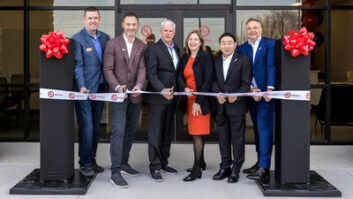TWICE: At retail, how successful have unilateral pricing policies (UPP) been in the past year? Do you see them changing in any substantial way during the year?
Fred Towns, New Age Electronics and Jack of All Games: UPP has been a positive factor in the retail market and will continue to be in 2014. It will continue to prevent price gauging and keep profit levels high. UPP will also force distributors and retailers to find other ways to draw consumers in, which will create excitement and cause retail to keep evolving. UPP will continue to keep parity between brick-andmortar and online retailers and will allow retailers’ sales teams to tell a story focused on the technology of the product versus the price alone.
Jeff Davis, D&H Distributing: UPP pricing is great for holding prices steady, but not necessarily as great for driving higher sales. We predict the guidelines will stay more or less the same. Not many companies have the branding clout to pull off the concept successfully. UPP works, but it takes the back-andforth of “consumerism” out of the process. If the UPP is too high, customers have been known to simply move to another product to get their perceived deal.
Rick Wigen, Almo: UPP has been successful, and will continue to be, among the tier-one players. In this very mature category it is difficult for retailers to make sufficient margins; therefore, UPP has been important and will continue to be.
Bill Stewart, Petra Industries: We see more factories implementing UPPs in order to maintain MAP and brand value with mixed success. Though enforcing a UPP on the Internet can be similar to playing Whack-A-Mole, it’s likely that these policies will continue for in the immediate future. Manufacturers with patience and persistence should see desired results over time.
Jerry Satoren, DSI Systems: The question now is not how successful they were last year because, frankly, most retailers have chosen to comply with these programs. What has become the real issue is even when dealers advertise and/or sell at MAP or UPP prices, is the margin provided under these programs? [They] have eroded over time to where they are simply unacceptable in many cases.
The industry got to a point in 2013 where the difficult business climate in TV made manufacturers look for more volume at the expense of the retailer’s profit. This is not a winning formula for cutting-edge technology products that need competent and knowledgeable selling. In 2014 I don’t think we will see much structural change in these programs, but I sure do hope we see some change in what a retailer earns for the service he provides.
Dennis Holzer, The PowerHouse Alliance: UPP has certainly helped the industry thus far maintain advertised pricing. UPP is also picking up speed as additional vendors add these policies to their lineups. While UPP is helping, to be completely successful, UPP still requires actions by the manufacturer that if someone does break their policy, rigid consequences will be enforced to prevent future breaks from reoccurring.
Curt Hayes, Capitol: We are seeing successful implementation of UPP with many of our premium brand vendors. The key is actually investing in the technology to track and take action on violators. UPP will continue based on the success we saw in 2013.













